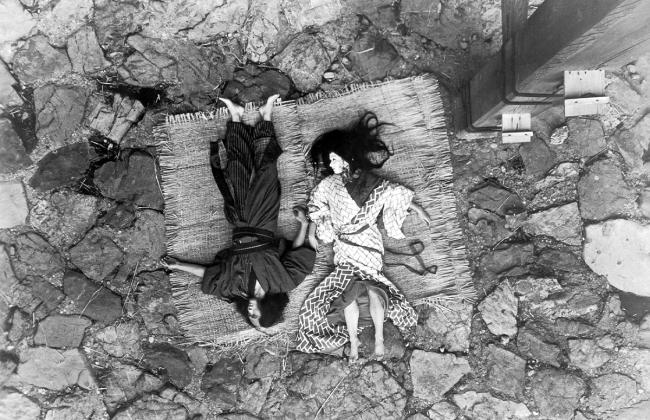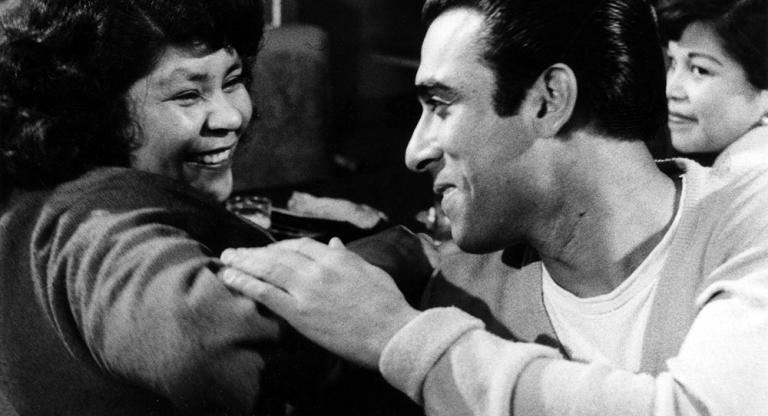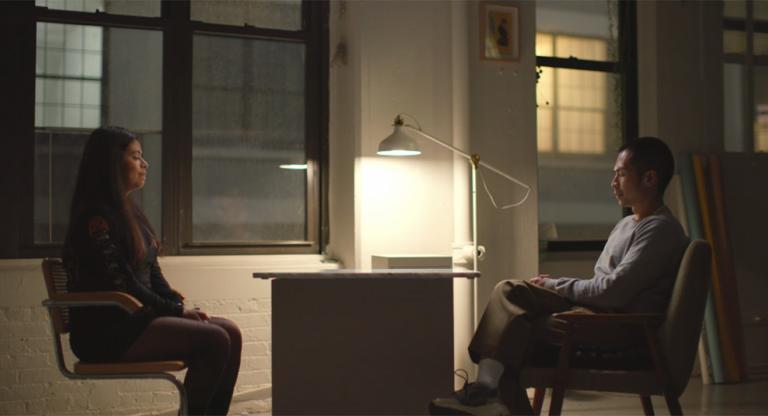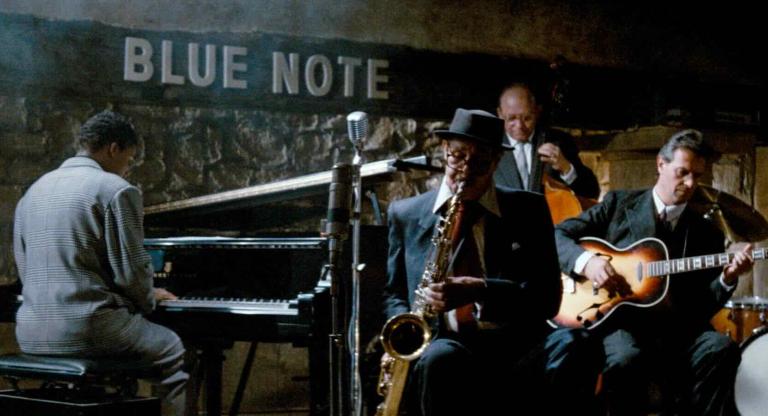Speaking at a 2016 Museum of Modern Art symposium on the San Francisco-based moving image artist Bruce Conner, Sheldon Renan identified the “problem with film history.” According to him, “by the time you realize that what happened was important, nobody who was actually there can actually remember what actually happened.” A writer, filmmaker and all-around cineaste, Renan intimately understands this dilemma, as he has devoted much of his life to spotlighting the important when it risks becoming ephemeral. When he published An Introduction to the American Underground Film in 1967, it became the first book to tackle the explosion of independent film artists working largely in small-gauge formats, including the likes of Conner, Bruce Baillie, Stan Brakhage, and Andy Warhol.
At the same time, Renan laid the groundwork necessary to create the Pacific Film Archive at the then-recently-founded Berkeley Art Museum. BAMPFA is now one of the most beloved Bay Area film institutions, but at the time embodied a novel idea, that of the regional film center.
After successfully launching the Archive in 1971, Renan went on to become a Johnny Appleseed of film centers, helping secure the Detroit Film Theatre, the Film Center of the School of the Art Institute of Chicago (now named the Gene Siskel Film Center), and the Northwest Film Center (now PAM CUT) in Renan’s birthplace and current hometown of Portland, Oregon. In anticipation of an in-person lecture happening in Berkeley on September 15, I spoke to Renan and BAMPFA’s current Director of Film and Senior Film Curator, Susan Oxtoby, over Zoom.
Brian Darr: Sheldon, I loved your presentation when the new BAMPFA space opened in 2016 and I was sorry to miss out on your and Jean-Pierre Gorin's appearance in last summer's tribute to your successor as PFA director, Tom Luddy, which I heard was great. What inspired this upcoming invitation? Which, I guess, is more a question for Susan.
Susan Oxtoby: It's an easy answer because the Berkeley Historical Society and Museum has been running an exhibit called “Berkeley and the Movies,” which began on August 21 and ends on September 21—and they've had a series of guest presenters. This is the one event that will take place off site from the exhibit.
The Berkeley Historical Society is located on the other side of Shattuck at 1931 Center Street. They're open Thursdays to Saturdays, from 1 to 4 PM. It’s very specific hours, but what they've got up is this incredible installation of all kinds of historical information about the different types of film venues that used to exist in Berkeley. And lo and behold, now I think that the Berkeley Art Museum and Pacific Film Archive, and the Elmwood, are the last two remaining film venues in the city. Harvey Smith, who is in charge of that exhibit at the Historical Society Museum, reached out. When he mentioned bringing Sheldon down from Portland, we jumped at the chance to do it here at BAMPFA and to build out a program around our early history.
BD: It's hard to believe that the last downtown Berkeley cinema space is one where you can't have popcorn.
Sheldon Renan: Well, historically, there was a time when you at least could have red beans and rice.
BD: Ah, that's a reference to Les Blank!
SR: Going up-and-down the stairs of the theater ladling the smell over the audience for “smellovision” while he showed one of his films, yes.
BD: How did you decide on screening Double Suicide [1969]? I know it was part of a series of Japanese films that you presented on television in the early seventies?
SR: 1975. It was called “The Japanese Film.” It took me four years to raise the money and it introduced Japanese cinema to American television. The only thing that had been shown at that time, I believe, was Yojimbo [1961], which had been shown by KCET and, of course, monster films. But except for those, no Japanese films had been shown. Japanese films were very, very successful at the archive, and I was a great fan of Japanese films, having lived in Japan prior to starting the archive. The first time I went to Japan, I arranged that first deposit of films for the Archive from Toho—75 films.
SO: I think I actually suggested that we show Double Suicide, partly because we've had that 35 millimeter print in the collection since 1977. I thought, “Beyond it being a very interesting film and also connecting to Sheldon's period at the Archive and bringing in our Japanese collection, it's also an example of how, if well-handled, 35 millimeter prints can last a very, very long time.” Our print is in beautiful condition.
SR: It was struck especially for the series and new subtitles were re-translated. And then we had [the director Masahiro] Shinoda there. The composer who did the music for it, Toru Takemitsu, also did the music for the TV series, which was 13 shows of 13 classic films. That happened to be a favorite film of mine and when the print arrived, I took it up and showed it to Francis Coppola in his basement one evening. He just said one word the entire film, but he kept saying it again and again, and that was “Neato.” “Neato.” “Neato.” It's a wonderful film.
BD: Is that the same print I would have seen as part of an Art Theatre Guild series at the purple-seat screening space at Bancroft & Bowditch in 2013?
SO: Yeah and we also showed it [at our current space] in December and January of 2018/2019, when I did highlights of our Japanese film collection.
SR: When I produced the TV series, I put in the contract that the prints that we made would be deposited in the archive. I don't know what else we've shown from that series, but my favorite showing was when we showed Ikiru [1952] to [Akira] Kurosawa and he hadn't seen it for 10 years. I sat next to him and he laughed the entire film. To him it was a comedy about somebody dying of cancer.
BD: Another film I saw at the purple-seat archive. That was the venue that brought me in because I was too young to be a cinephile in 1977. I first went in 2001 and have seen many hundreds of films there since. Is it true that one of the first items deposited into the archive was actually a nitrate print from Len Lye: Trade Tattoo [1937]?
SR: That's true. Len gave it to me to take care of and Kemp Niver, who was responsible for saving the first 20 years of American cinema, the paper print collection which the Academy had lost, interwound it to keep the nitrate from rotting.
Len was a fascinating guy. When I was doing my book, An Introduction to the American Underground Film, I was able to interview everybody except him. He claimed that he had stopped making films but really, secretly, he was working in the garage, making his final scratch films, which he made totally by scratching into black leader.
Finally, I went to his house in Greenwich Village one Saturday morning, and pounded on the door and said, “Look, I've interviewed everybody except you. I've got to talk to you.” He said, "Well, get in the car then, because I have to leave, I have to give a talk at Yale." From then on, we were really close friends. We got up to Yale. He put a tape recorder on the stage and then lip-synced. He had pre-recorded his talk and lip-synced it, playing it back at three times normal speed. That was Len.
SO: Can I interject? This is just a nice coincidence. Today happens to be the day when the incoming freshman students at Berkeley come to BAMPFA and we get them into the film theater, and our "house film" is Free Radicals [1958], the Len Lye film. We always show it to the incoming students as an example of the kinds of films they could see here. That film will be playing three times this afternoon, introduced by our team—just thought you'd like to know that, Sheldon.
SR: You remember that I chose that film when you had me talk in 2016. It's just a sensational film. He was a very primal guy. When he was growing up in New Zealand, he used to take a dugout out to the reef and stand in the reef all day, staying there until the tide would go up to his neck and just his head would be above the water.
BD: Is there any more nitrate in the BAMPFA collection?
SO: All of our nitrate is stored at UCLA. There's a list of maybe some 30 to 40 titles, short-length and feature-length, but it's in a vault where we can safely store nitrate. UCLA has a beautiful situation at the [Packard Humanities Institute] Stoa archive, so that's where it's held. It's good that within the UC system there's an archive that can handle nitrate. We have done some preservation projects through the years from titles that were in the collection on nitrate, but we don't show it in our theater.
SR: We originally stored it at my home in my library underneath my bedroom, because it was cooler than any storage the museum had. Including Trade Tattoo. It was a real bootstraps operation in the beginning. Then we stored it under the theater—it was the coolest place. Eventually, I think Edith [Kramer, Susan Oxtoby’s predecessor as BAMPFA director] was the person who finally was able to arrange real storage.
BD: In those early days, was there ever an issue with getting butts in seats?
SR: The very first program that almost nobody showed up for was a Swedish Film Institute presentation. We were only charging 50 cents a seat. The minute we raised the price, people started coming. I don't know how that works.
There was a lot of competition on campus, but there was a real hunger for film in Berkeley. When Pauline Kael wrote the film notes for Ed Landberg [who founded and ran the Cinema Guild on Telegraph Avenue], it became I Lost It At The Movies. Albert [Johnson] was reading modern literature and Tom [Luddy] got a job, as a freshman, doing needle drop music to go with Albert reading the stories. Later on, he began helping him do film programming as well for Arts and Lectures. Everybody was competing. I wasn't as concerned about audience as just being around film.
They asked me if I wanted to teach a seminar on experimental film. It wasn't in the catalog or anything. They put a little card out in the Student Union. You could sign up to attend a seminar: Masters of Underground Film. I showed up the first morning and I couldn't get in. The door was locked and I saw there was a note that the seminar had been moved from Dwinelle to Wheeler Auditorium. I went over and there were 600 kids there. Those kids became the fuel—the plutonium bricks—which powered up the start of the archive. They volunteered. They did everything.
There was no movie theater planned for the [then-]new museum [Mario Ciampi’s Brutalist building south of campus, on Shattuck]. We took over a room which was originally supposed to be a “happening” room and I worked with the architects at the university to design a kind of a pop-up theater that seated 199 because insurance went up at 200. I could put a movie theater in as long as it could come down on 24-hour notice. I can't tell you the degree to which I was obsessed with films at that time and I made it a real moviegoers’ theater. It was a six-inch rise in every row, so no matter where you sat in the theater—no matter how tall the person was in front—you had a clear view of the screen. And because [Jean-Luc] Godard said that the best way to watch a movie was with your knees up, they let me put metal backs on the seats so your knees wouldn’t slip.
I was really a nut about movie projection and we finally got the person who did the custom screening rooms for Frank Sinatra and Otto Preminger to design the booth for me. We got really good lenses and really good projectors. Pretty soon, people from Europe were saying that they wanted to premiere their film in that room.
That kind of obsession with making films look as good as they could was how we began to cook the DNA that is the Film Archive today and each generation that came along added to it and made it better. In the beginning, we were responding to an audience that was built by other people. But today they're selling out the theater time-and-time again to things that we never would have been able to sell out, because they built a sophisticated audience with a new palette for movies. People like yourself. Did you ever see films in the old original theater?
BD: I only went to a lecture that Tom Gunning gave. By the time I was around, no films were shown there. But it was a great space for a lecture, too.
SR: Yeah, it had a sense of privacy and quiet. Each space has its own tone quality. Now you have, what, 40 more seats than we had in the old days?
SO: It's 226. With wheelchairs, 232. Same projectors. We still have the Century projectors. And the Hortson might have come in after you, I don't know. The French-made 16mm pedestal [projector].
SR: We had that. Everything on railroad tracks. We were obsessed with having it just look peachy keen. Pretty soon, Hollywood began sending all of their most interesting, new stuff that needed to be warmed up. When The French Connection [1971] first came out, that was a failure, so they began warming it up.
They sent the director and Gene Hackman to us. I interviewed Gene Hackman, who I was nuts about because he did all these interesting supporting roles. Then the director came on and he talked. He was really good with the audience. I noticed that my five-year-old son, George, was missing, and the director… I forget his name, he died recently.
BD: William Friedkin.
SR: Friedkin was handling the audience very well, so I just left to look for my son. Finally, I went out into the courtyard and there was Hackman and my son walking hand-in-hand in the night, looking at all those sculptures. Later I found out that he had a son, the same age as mine, who he was missing because he was doing his first ever movie tour. He wasn't used to being away from his family. Things like that were always happening.
Double Suicide screens on Sunday, September 15, at BAMPFA on 35mm, preceded by a presentation on the PFA's history by Sheldon Renan and a conversation between Renan and Susan Oxtoby, as part of “The Early Days of the Pacific Film Archive & Double Suicide."






